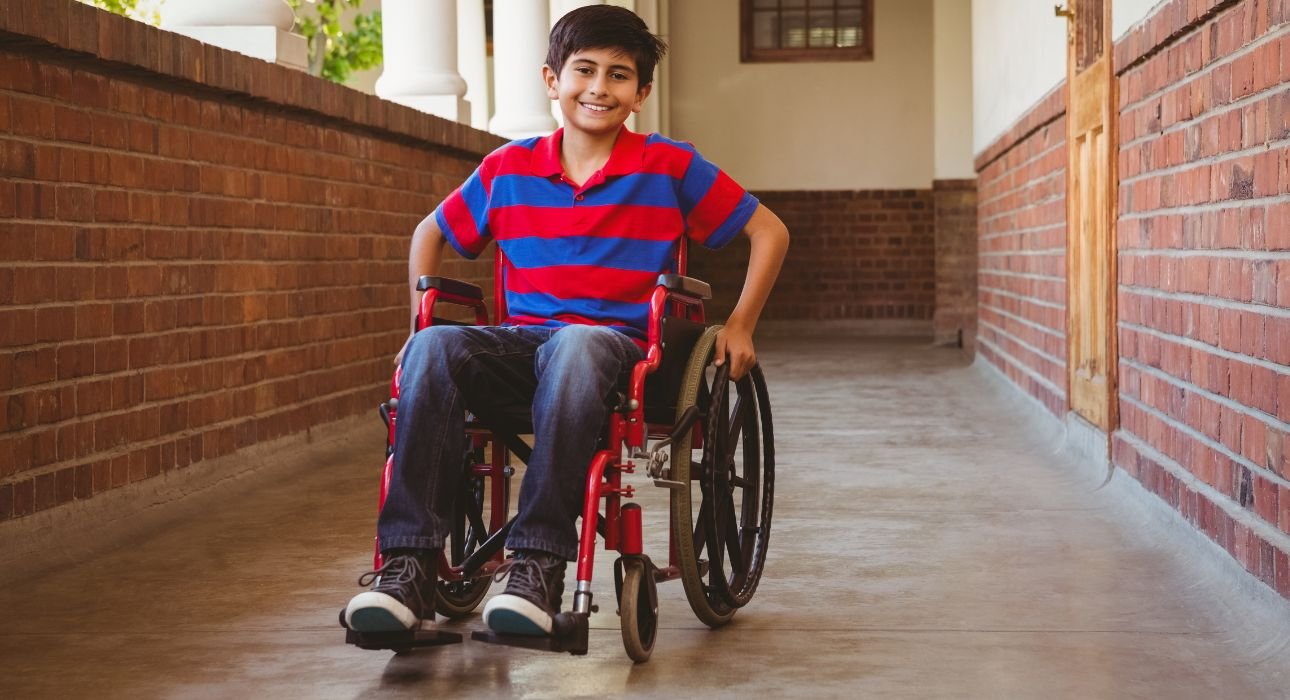What if the main thing preventing someone from having a fulfilling life is how society reacts, rather than the person’s disability? “Disability” has many meanings defined by experts and groups (Haegele & Hodge, 2016). According to the International Classification of Functioning, Disability, and Health (ICF), disability consists of impairments caused by illness or injury, the limitations these impairments create, and environmental barriers people face (Altman, 2014).
Disability can be viewed from both society’s perspective and the disabled individual’s perspective, thus having two prominent and contrasting models: the Medical Model and the Social Model (LoBianco & Sheppard-Jones, 2007). These two models are imperative to understanding how disabled individuals are treated in society and what is necessary for future rehabilitation and inclusion that aids them. These theories differ in focus, with one examining the health problem itself and the other looking at the challenges society creates for disabled people.
These models were created due to the matter of perception. The self-perception of an individual with a disability who chooses to embrace, accept, or reject the diagnosis (Olney & Brokleman, 2003) contrasts with society’s perception, which is how it chooses to respond.
Understanding the Medical Model
Research underscores the medical model of disability as solely focused on the individual’s impairment and disability, considering it treatable by medications (Fatoye et al., 2019). This model views disability as a health issue affecting a person’s physical and mental state, with emphasis on diagnosing, treating, curing, or helping the individual manage the condition so they can function better in society. This model is used in clinical and healthcare settings (Haegele & Hodge, 2016).
Historically, the medical model evolved after replacing religious leaders who guided patients in making decisions about medicine and treatment. The model argues that any social and environmental changes cannot provide individuals with a fair opportunity comparable to those without disabilities (Haegele & Hodge, 2016). The only solution within the model is to treat and completely cure the individual of the impairment.
Research shows its applications mainly in education (Palmer & Harley, 2011). The medical model offers disabled individuals a formal diagnosis, which schools use to apply for special education services and place children in low student-to-teacher ratio settings (6:1:1), ensuring they receive focused support from teachers (Haegele & Hodge, 2016). For instance, a student with an intellectual disability requires a formal diagnosis to apply for special education, not simply someone saying the child needs support.
Limitations of the Medical Model
- The medical model places a disabled person’s life and their choices depending on medical professionals like doctors and psychologists. While it supports and helps the individual, they are sometimes reduced and seen as a condition rather than as human beings (Haegele & Hodge, 2016).
- Issues such as incorrect diagnoses and excessive labelling of individuals can lead to a loss of self-esteem and confidence.
- These diagnoses can also limit their educational opportunities, employment, and other chances (Haegele & Hodge, 2016).
- As research shows, a common complaint about this model is that while doctors and medical professionals diagnose and treat individuals, they should not have the power to control the lives of disabled individuals or dictate how society should perceive them (Haegele & Hodge, 2016).
Understanding the Social Model
The Social Model of disability suggests that disability is a condition created by society’s response to individuals’ impairments (Bingham et al., 2013; Fatoye et al., 2019; LoBianco & Sheppard-Jones, 2007). It shows a clear distinction from the medical model, where the focus is on the condition and treatment rather than the structure of society, which consists of an inaccessible environment, negative attitudes, and institutional limitations.
The social model interprets the definition of disability as different from impairment. Impairment is a physical or mental condition that an individual struggles with; however, disability is the lack of equal opportunities provided for impaired individuals (Goodley, 2001). The social model is also widely misunderstood (Burchardt, 2004).
Historically, the social model arose from the civil rights movement of disabled communities. In this model, if societal, environmental, and economic barriers are removed, people with impairments can participate fully in all areas (Fatoye et al., 2025). The social model demands provisions for easier accessibility, including ramps and more elevators for individuals with impairments. Additionally, transportation strategies and laws enforced by authorities should be implemented to prevent discrimination, bullying, and other forms of harassment (Australian Federation of Disability Organizations, 2019). These should be normative demands and rights of individuals, not something considered charity (Burchardt, 2004).
Social Model and Economic Disadvantages
An advantage of the social model is that it highlights the economic disadvantages faced by people with impairments. Studies show that disabled individuals typically earn a lower income due to the costs involved in purchasing equipment or personal assistance. It is essential to consider these factors as they reflect disparities in living standards. The model also urges society to stop normalising disabled individuals, as this denies them the right to choose how they want to live and be treated.
Additionally, the social model aligns with the capability approach, which promotes a focus on what individuals can do rather than simply their impairments. It underscores the importance of free will for disabled individuals to make their own choices rather than have medical professionals dictate them (Burchardt , 2004).
Limitations of the Social Model
- Unfortunately, formulating public policy requires setting priorities, and if policy is to promote human capabilities, it is necessary to identify which capabilities are the most important (Burchardt, 2004).
- The social model was an empowering new perspective for many people with disabilities; however, some struggled with the implication that their disability was entirely the result of oppression, as this seemed to suggest that individual challenges should be overlooked (Hogan, 2019).
- Additionally, implementing policies and reforms may be time-consuming and may not reflect an accurate perception due to the lack of data. Furthermore, large datasets often fail to clearly distinguish between disability and impairment. As a result, researchers find it difficult to determine whether a person faces exclusion due to society’s inadequate response or a genuine lack of ability. To address this issue, they focus on functionality rather than capabilities—that is, they examine what a person can do instead of merely identifying potential opportunities (Burchardt, 2004).
- Another limitation is the need to consider all types of impairments and ensure that each concern is heard. However, this can be extremely challenging due to the wide range of demands and specific needs associated with different disorders.
Conclusion: A Better Approach
Instead of viewing the models as contrasting, a new perspective suggests a combined approach, considering these models to be complementary to each other. In a recent study, only 37% expressed support for the medical model, 67% favoured the social model, but 82% agreed that the better combination is both models. Research shows that it is possible to help people with disabilities through medications and medical professionals, not to normalise disability but to help them function well and achieve their goals (Zaks, 2023). The combination of the medical model with the social model removes barriers to social inclusion. This combined model encourages a rounded approach to addressing the health and well-being of disabled individuals in society (Fatoye et al., 2025).
FAQs
Q1. What is the core difference between the medical and social models of disability?
The core difference between the two models is the perception of disability. The medical model views disability as an individual’s problem due to a physical, biological, emotional or mental impairment. The societal model, however, sees it due to the response of society and societal barriers.
Q2. How does the medical model impact people with disabilities?
The medical model provides a formal diagnosis for disorders so that individuals can apply for special education and other applications. However, it negatively impacts individuals because their choices and lives are under the supervision and control of medical professionals.
Q3. What are some examples of societal barriers that the social model identifies?
Examples of societal barriers are inaccessible buildings, negative attitudes that cause discrimination, bullying, etc, lack of communication, etc.
Q4. What is the relationship between impairment and disability according to the social model?
The social model distinguishes between impairment and disability. Impairment is the individual’s physical or mental condition, while disability is the limited opportunities caused by societal barriers.
Q5. Why is understanding both models important?
Understanding both models is essential for developing a combined approach. This promotes a more holistic and inclusive society—one that effectively supports individuals with impairments.
References +
- Altman, B. M. (2014). Definitions, concepts, and measures of disability. Annals of Epidemiology, 24(1), 2–7. https://doi.org/10.1016/j.annepidem.2013.05.018
- Australian Federation of Disability Organisations. (2019). Social model of disability – australian federation of disability organisations. Australian Federation of Disability Organisations – Australian Federation of Disability Organisations. https://afdo.org.au/social-model-of disability/
- Bingham, C., Clarke, L., Michielsens, E., & Van de Meer, M. (2013). Towards a social model approach? Personnel Review, 42(5), 613–637. https://doi.org/10.1108/pr-08-2011-0120
- Burchardt , T. (2004). Capabilities and disability: the capabilities framework and the social model of disability. Disability & Society, 19(7), 735–751.
- Fatoye, C., Betts, A., Odeyemi, A., Fatoye, F., & Odeyemi, I. (2019). PNS148 Educating People About Disability And Giving People With Disability The Same Opportunity As People Without Disability: Descriptive AnalysisS. Value in Health, 22, S310. https://doi.org/10.1016/j.jval.2019.04.1505
- Goodley, D. (2001). “Learning Difficulties”, the Social Model of Disability and Impairment: Challenging epistemologies. Disability & Society, 16(2), 207–231. https://doi.org/10.1080/09687590120035816
- Haegele, J. A., & Hodge, S. (2016). Disability Discourse: Overview and Critiques of the Medical and Social Models. Quest, 68(2), 193–206. https://doi.org/10.1080/00336297.2016.1143849
- Hogan, A. J. (2019). Social and medical models of disability and mental health: evolution and renewal. Canadian Medical Association Journal, 191(1), E16–E18. https://doi.org/10.1503/cmaj.181008
- LoBianco, A. F., & Sheppard-Jones, K. (2007). Perceptions of Disability as Related to Medical and Social Factors. Journal of Applied Social Psychology, 37(1), 1–13. https://doi.org/10.1111/j.0021-9029.2007.00143.x
- Olney, M. F., & Brokleman, K. F. (2003). Out of the Disability Closet: Strategic use of perception management by select university students with disabilities. Disability & Society, 18(1), 35–50. https://doi.org/10.1080/713662200
- Palmer, M., & Harley, D. (2011). Models and measurement in disability: an international review. Health Policy and Planning, 27(5), 357–364. https://doi.org/10.1093/heapol/czr047
- Zaks, Z. (2023). Changing the Medical Model of Disability to the Normalization Model of disability: Clarifying the past to Create a New Future Direction. Disability & Society, 39(12), 1–28.













Leave feedback about this